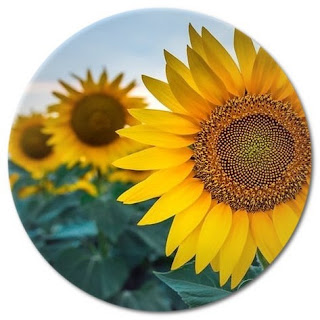What is an Orchid Flower? Orchid Flower Care?
Orchid flowers are a perennial plant species. Orchid flowers are the largest family of the flower family and are distributed almost everywhere in the world. There are 900 different genera of orchid flowers in the world. There are approximately 20,000 species of these 900 genera of orchids. While some of the orchid flowers live directly in the soil, most of them live on other plants.
Orchid flower care is quite difficult, but when you apply simple rules and follow the rules of care, you can easily care for orchid flowers. Here are the points you should pay attention to in orchid flower care procedures. The first thing to be considered in orchid flower cultivation and care is to create a suitable environment. The second important point in the care process is to pay attention to the watering, feeding and pruning of the orchid flower. The most important and last aspect of orchid care is to effectively control diseases and pests. To prepare the best environment for orchid flower care, it is enough to do the following. Pot selection is very important for growing orchid flowers.
Orchid Flower
How to Prune Orchid Flowers?
Pruning in orchid flowers should be done to remove dead parts on the flower, to give form and to encourage re-flowering. Orchid pruning The dried and yellowed leaves on the orchid flower should be removed from the part close to the flower body without causing any damage to the flower body. For the flowering process in orchid flowers, while the flower stalk is green until the end of the flowering period, it should be cut just above two or three nodes by counting the flower eyes from the lower part to the upper part. Immediately after the orchid flower pruning process is finished, the pruning wounds should be wrapped with aluminum foil. The soil of the orchid flower should be kept constantly moist. Absolutely no water should be left in the bottom plate of the pot where the orchid flower exists. You can check the soil moisture of the orchid flower with your finger. The best watering time of the orchid flower is morning and noon. Orchid flowers do not like too dry and high humidity environments. These air environments we have mentioned have a negative effect on the flowering phase in orchids. Orchid flowers usually bloom in the spring and fall seasons. Orchid flowers should also be treated with liquid fertilizer once a month for good development.
How to Propagate Orchids?
Propagation of orchid flowers by seed method is a very laborious and knowledge-demanding process. The most suitable propagation method for orchid flower production is to utilize their offspring. The offspring of orchid flowers is called keiki. Orchid flower propagation. Orchid flowers usually reproduce in the spring season. They are separated from the orchid flower, consisting of at least two leaves and roots. When you are going to plant baby orchids in pots, the most important thing to pay attention to is that if they are planted in a transparent pot, they should be placed in a place where there is a windy breeze and kept in a place with good sunlight. Orchid flowers that make good use of light, watering is done correctly and properly and kept at the appropriate temperature they need, can bloom 2-3 times a year. When orchid flowers are well cared for, they are types of flowers that can preserve their existence for many years and add a very beautiful scent and beauty to homes and gardens.
Another issue to be considered when propagating orchids is to combat diseases and pests. The presence of ash-colored molds that have a sticky structure on the leaf parts of orchid flowers is a sign that there are crusts and cotton. You can clean the visible pests on this orchid flower by groping. You can wipe the pests remaining on the leaves that you cannot clean by hand by mixing dishwashing detergent in warm water. If the pest problem still persists after doing these procedures, you can use a medicine suitable for orchid flowers. However, do not use any medication without doing these procedures, since these drugs are chemical drugs, if no results are obtained after trying normal ways, medication should be used. If there is any yellowing or staining in the leaf parts of the orchid flower, rotting or mold in the root parts, they should be cut with a well-cleaned garden shears and removed from the plant. If the disease on the flower persists after making these cuts, medication can be used. The point you should pay attention to here is that the tool you will cut should be well cleaned. Do not cut with any random scissors, use pruning shears and pay attention to their cleaning before use.
Some Types of Orchid Flowers
Orchis coriophora, Orchis collina, Cephalanthera longifolia, Orchis anatolica, Cephalanthera rubra, Ophrys vernixia, Comperia comperiana, Ophrys umbilicata, Dactylorhiza iberica, Ophrys reinholdii, Ophrys mammosa, Ophrys isaura, Ophrys lutea, Ophrys holoserica, Ophrys fusca, Ophrys ferrum-equinum, Serapias vomeracea, Orchis tridentata, Orchis punctulata, Orchis papilionaceae, Orchis palustris, Orchis spitzelii, Orchis simia, Orchis laxiflora, Orchis mascula, Orchis italica, Ophrys cilicica, Ophrys bornmuelleri, Ophrys apifera, Limodorum abortivum, Himantaglossum afine, Epipactis helleborine,





Comments
Post a Comment